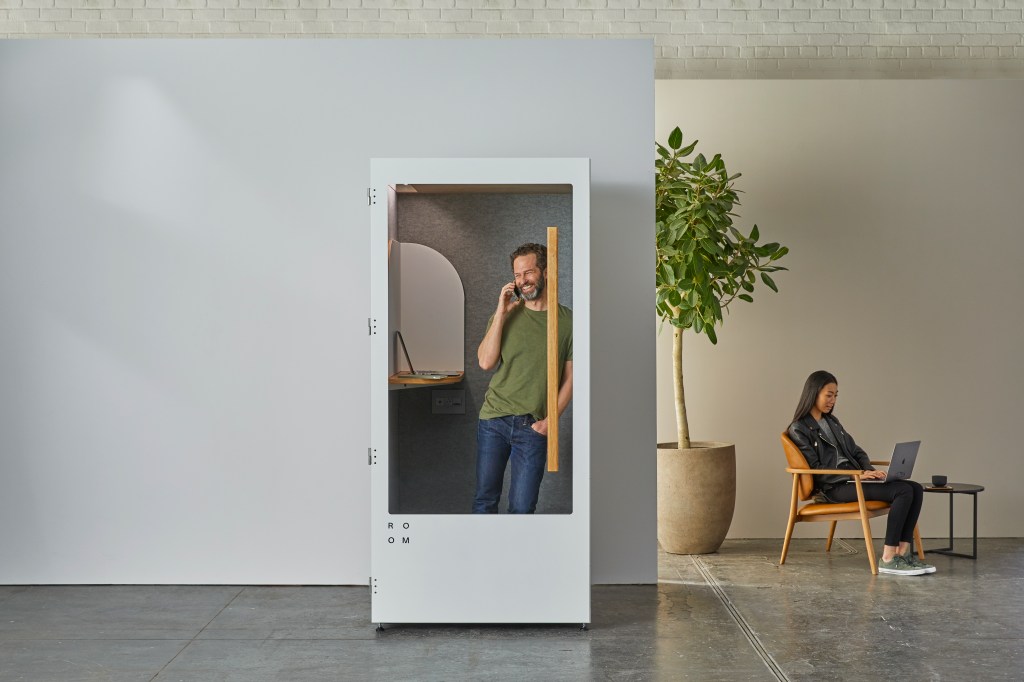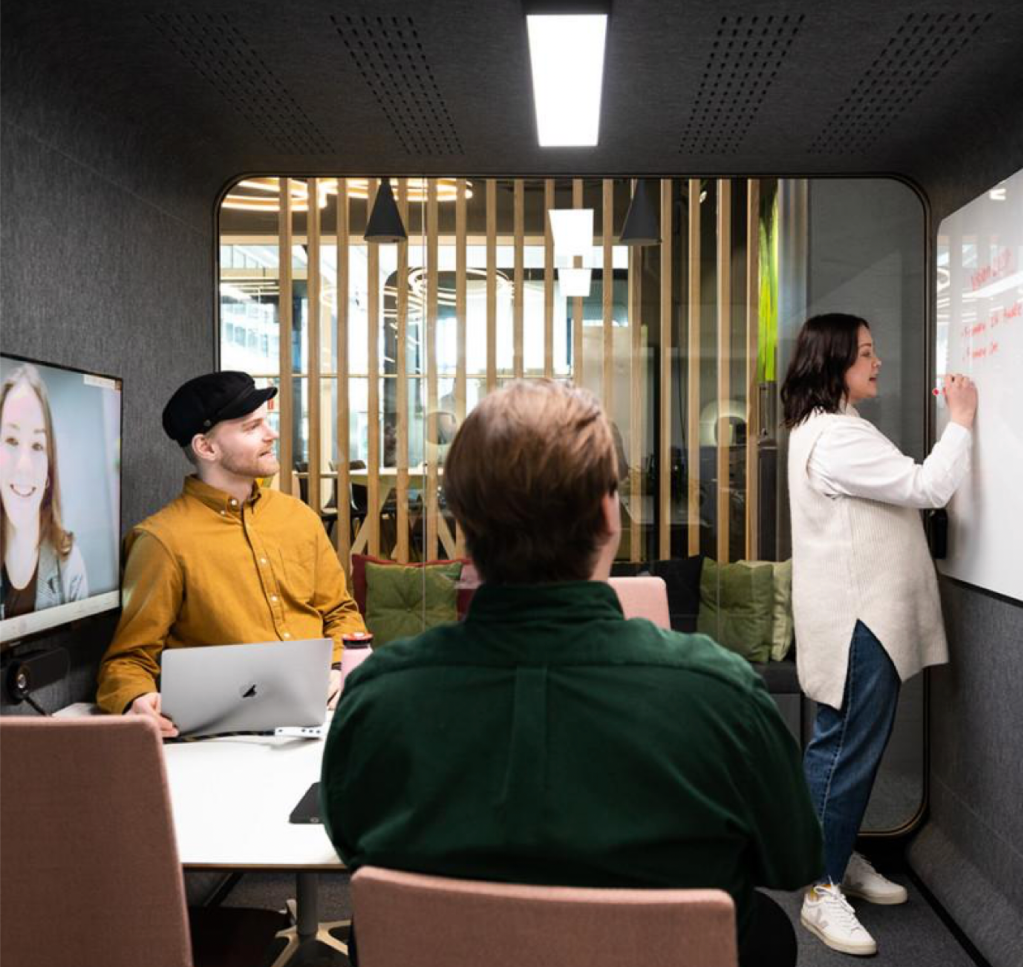Phone booth 2.0: How modular pods are being redesigned to support hybrid work

In the days before Covid, when open concept offices were standard, phone booths were private, simple pods where employees could discreetly deal with personal matters and take work calls without disturbing colleagues. And then there were the naughty co-workers who used the booths for impromptu naps by turning the seat around to avoid detection.
Like so much of the post-Covid workplace, phone booths have been reevaluated and redesigned. As employees return to the office, many for just a few days per week for collaboration and planning, they still serve as places for discretion, but they’ve gotten an infusion of technology and are increasingly used for seamless video calls and meetings since odds are at least one attendant is remote. They’ve got lots of functions—and names: Zoom Room, web room, focus room and chat room.
“Providing opportunities for privacy is very important in the current workplace, second only to collaboration,” said Michelle Beganskas, senior manager of workplace strategy at the office design firm Ted Moudis Associates. “These rooms are also designed to be multipurpose- mostly created for places to work or take a call with privacy. Some can also be placed in more secluded locations to serve as places to relax and recharge.”
These sleek, soundproof pods are often outfitted with adjustable lighting, a digital whiteboard and video screens, all designed to avoid the snafus that inevitably occur when meeting attendees are in-person and others are remote.
Meeting etiquette has become such a big issue, that many employers are asking for all meetings where there is at least one virtual participant to have a virtual meeting champion, said Julia Lamm, a workforce strategy partner at PwC.
Room, an office phone booth and meeting pod manufacturer, partnered with Zoom to create a booth with the video conference software pre-installed. It also comes with a screen, speakers and a height adjustable table. When an employee books the pod and inputs their identification and password, the pod’s touchscreen syncs with their calendar so the meeting is automatically queued up and ready upon entry.

“It’s basically got all the bells and whistles,” said Morten Meisner-Jensen, co-founder of Room. “You can walk in and have the perfect virtual meeting.”
Manufacturers typically offer single use and for meetings of up to six people. At Framery Acoustics, a manufacturer of private soundproof spaces based in Finland, the most popular model is the 2Q, which has a table, occupancy for four to six people, a video camera, screen and a whiteboard (digital or not). The screen is on one side of the table and faces a whiteboard hanging from the opposite side of the pod so virtual participants can see it.
“It’s possible to get every member, no matter if they are there physically or joining remotely, as a full participant,” Lasse Karvinen, head of products at Famery.

When asked if these booths are a luxury or necessity — after all, most employees make due with a shoddy connection and harsh lighting — instead of spending $5,000 and up for a booth — Karvinen said this: “It was part of a premium experience before the pandemic. Our vision is that it is a necessity for a successful workday.”
Although most hybrid employees go to the office for collaboration not heads-down work, there are still times when they do need to, well, focus.
“The modern workspace was broken far before Covid hit, Covid just made it abundantly clear,” Room’s Meisner-Jensen said. “Traditional construction is incredibly expensive, slow and not very sustainable. A lot of companies have started to use modular architecture as an alternative because it’s fast, affordable, and it’s flexible. You can design an office today and reconfigure it again in 100 days or 200 days, as you see fit.”
